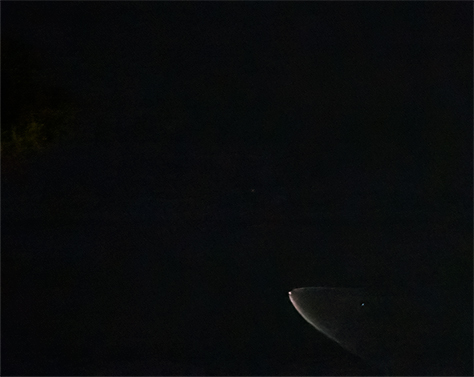took another crack and venus and mercury. unfortunately seeing was not great...
 |
| Venus 4/16/23 02:43 UTC IR pass 850nm |
 |
| Mercury 4/16/23 02:33 UTC IR pass 850nm |
i decided image venus during the day (venus is bright enough to see in broad daylight, it's just really hard to find) for 2 reasons:
-all other things being equal, the seeing should be better with the planet at higher altitude
-i was hoping to capture motion of venusian clouds by imaging over a long period of time.
sadly it was a total bust. imaging runs over 20 minutes captured no cloud detail whatsoever (until earthly clouds obscured my view). perhaps a hint of something towards the upper half as venus got lower in the sky:
 |
| Venus 4/17/23 00:36 UTC UV |
 |
| Venus 4/17/23 00:05 UTC IR pass 850 nm |
at a recent meeting of the OC astronomers, Chris Go (who admittedly doesn't image venus) suggested that sunlight saturates the daylight sky with UV ruining the detection of clouds. or perhaps it was just a clear day on venus ;)
I have captured cloud detail in the past with this set up at twilight:
camera ZWO ASI 290MM
filters: ZWO IR pass 850, Baader U-filter bw 320-380nm
celestron 11" Edge HD
East Bluff, CA
4/16/23
mediocre seeing
02:43 UTC
2x barlow
IR pass 850 filter:
FPS (avg.)=215
Shutter=0.746ms
Gain=351 (58%)
Frames captured=69635
02:33 UTC
2x barlow
FPS (avg.)=116
Shutter=3.281ms
Gain=436 (72%)
Frames captured=12765
Venus
no barlow as UV is faint
mediocre seeing
00:36 UTC
FPS (avg.)=217
Shutter=2.055ms
Gain=351 (58%)
Frames captured=39233
00:05 UTC
FPS (avg.)=42 ?!
Shutter=0.191ms
Gain=351 (58%)
Frames captured=12865






















